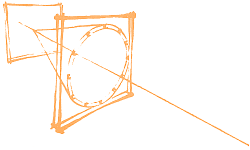Description
Morning half-session
Dr
Gregory Hallewell
(Centre de Physique des Particules de Marseille)
06/05/2010 09:00
Technological aspects of Cherenkov detectors
Oral presentation
The excellent dielectric properties of saturated (CnF(2n+2)) fluorocarbons have allowed their use in direct immersion liquid cooling of electronics, for example in the Cray series supercomputers. They have also found extensive use as heat transfer media in vapour phase soldering.
Their high density and optical transparency led to the suggestion by Seguinot and Ypsilantis for their use as...
Dr
Giacinto de Cataldo
(INFN sez. Bari Italy and CERN CH)
06/05/2010 09:30
Technological aspects of Cherenkov detectors
Oral presentation
The High Momentum Particle Identification Detector (HMPID) is a proximity focusing ring imaging Cherenkov (RICH) for charged hadrons identification at momenta 1< p < 3 GeV/c for pi and K and 1< p < 5 GeV/c for p.
The HMPID uses liquid C6F14 as radiator medium. The detection of the Cherenkov UV photons is carried out via CsI coated photocathodes and MWPCs.
To ensure a stable particle...
M.
Christopher Blanks
(Imperial College, London)
06/05/2010 10:50
Technological aspects of Cherenkov detectors
Oral presentation
Hadron identification in the LHCb experiment is performed by Ring Imaging
Cherenkov (RICH) detectors. The system is composed by two RICH detectors,
three radiators, imaging optics and 484 Hybrid Photon Detectors (HPDs).
The refractive index of the radiators (16 aerogel tiles, C4F10 and CF4) is
calibrated using saturated (beta=1) tracks and expected changes due to
atmospheric pressure...
M.
Lukas Steiger
(Technical University of Liberec)
06/05/2010 11:20
Technological aspects of Cherenkov detectors
Oral presentation
The COMPASS RICH-1 detector has been using two reflecting segmented spherical mirrors, constructed from 68 hexagonal and 48 pentagonal individual mirrors. All mirrors have three degrees of freedom per segment, i.e., piston, tip, and tilt. The influence of external vibrations, pressure and temperature fluctuation can change alignment of individual mirrors with respect to optimal spherical...

